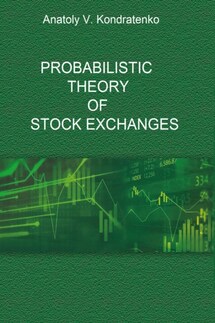Probabilistic Economic Theory - страница 5
Anatoly Kondratenko
Novosibirsk, 2015
INTRODUCTION. Probabilistic Economic Theory
“The market economy is the social system of the division of labor under private ownership of the means of production. Everybody acts on his own behalf; but everybody’s actions aim at the satisfaction of other people’s needs as well as at the satisfaction of his own. Everybody in acting serves his fellow citizens. Everybody, on the other hand, is served by his fellow citizens. Everybody is both a means and an end in himself, an ultimate end for himself and a means to other people in their endeavors to attain their own ends.
This system is steered by the market. The market directs the individual's activities into those channels in which he best serves the wants of his fellow men. There is in the operation of the market no compulsion and coercion. The state, the social apparatus of coercion and compulsion, does not interfere with the market and with the citizens’ activities directed by the market. It employs its power to beat people into submission solely for the prevention of actions destructive to the preservation and the smooth operation of the market economy. It protects the individual's life, health, and property against violent or fraudulent aggression on the part of domestic gangsters and external foes. Thus the state creates and preserves the environment in which the market economy can safely operate… Each man is free; nobody is subject to a despot. Of his own accord the individual integrates himself into the cooperative system. The market directs him and reveals to him in what way he can best promote his own welfare as well as that of other people. The market is supreme. The market alone puts the whole social system in order and provides it with sense and meaning”.
Ludwig von Mises. Human Action. A Treatise on Economics. Page 243
Exactly how is our economic market world arranged at the deepest micro level, at the level of individuals and businesses, buyers and sellers on markets? How does the market economy function? According to what laws and rules do people make decisions about price and quantity of bought and sold goods? How does a market price eventually become established, and how can one and the same volume of goods be sold regularly each year at this price on the market? How and why does this regularity change over the course of time, and how and why do markets grow or fall? We attempt to answer these and many other similar questions in this book within the framework of a new economic discipline, namely, physical economics.
In general terms, at the conceptual or descriptive level, the answers to these questions are known from classical economic theory. They are obtained with the aid of the logical method of economic theory and they are given in this book in epigraph form to the parts and the chapters. These answers represent by themselves extensive quotations from the fundamental work of Ludwig von Mises [1]. But other questions agitate us more. Where can we search for the answers in this book, and how can all these answers of classical economic theory be expressed in terms of the natural exact sciences, i.e., in mathematical language? Therefore, in the book we attempt to develop quantitative methods of calculation for economic systems, as well as their structure and dynamics, which would make it possible to speak about the further development of quantitative economic theory.







